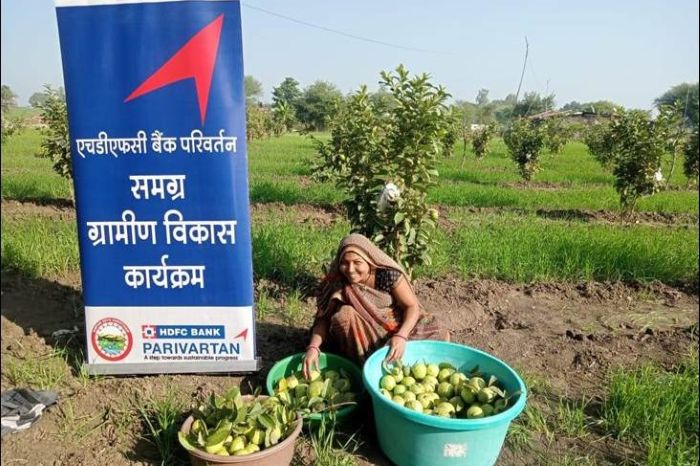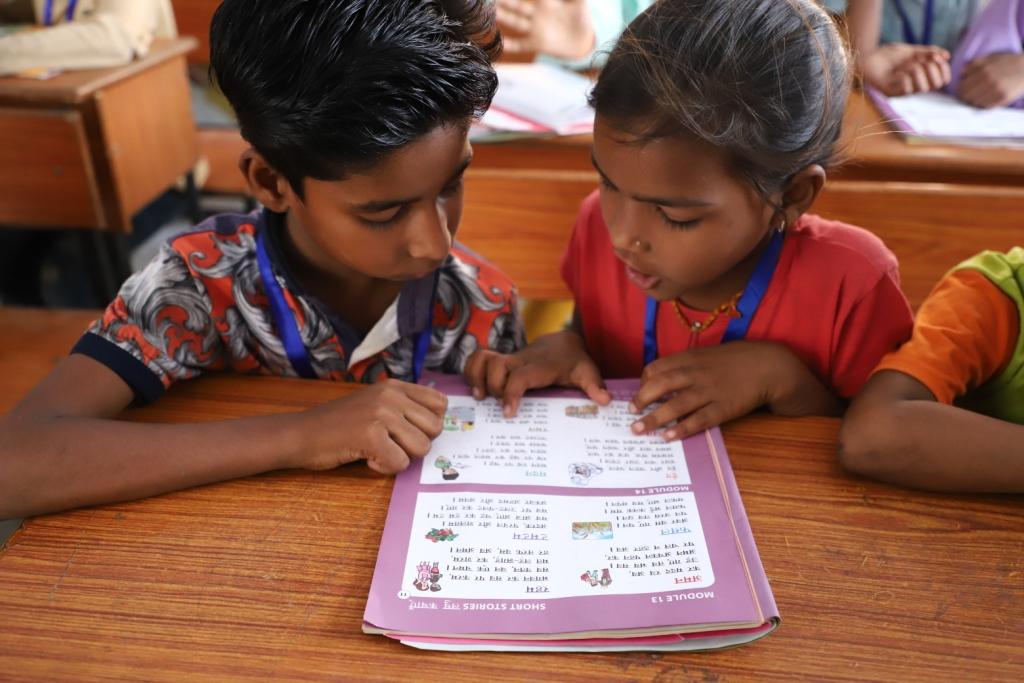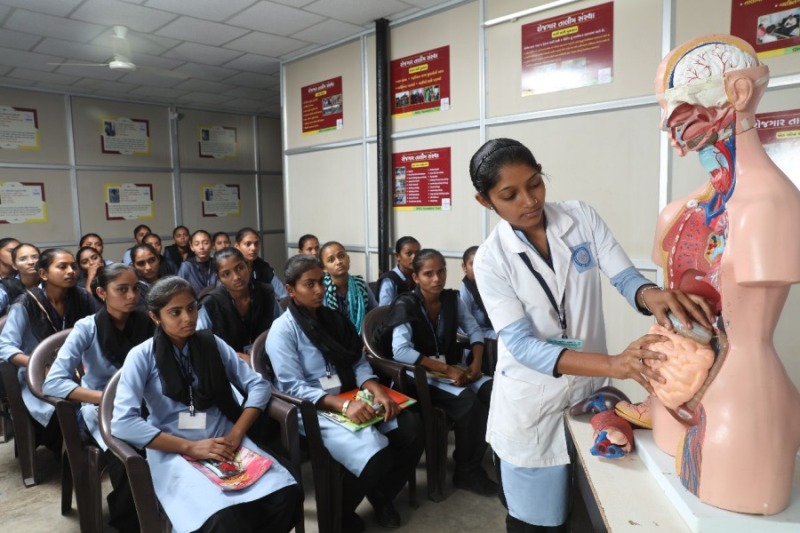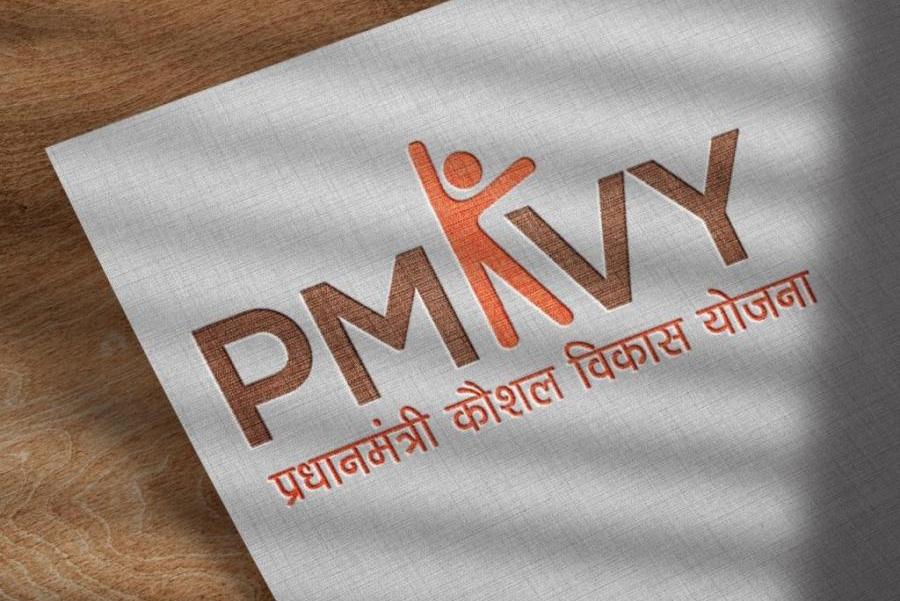Water is the foundation of life and economic development, yet the world is facing a severe water crisis. In India, over 600 million people experience high-to-extreme water stress, making the country one of the most water-scarce nations globally. Rapid urbanization, industrial growth, and climate change are accelerating the depletion of water resources, leading to groundwater shortages, declining agricultural productivity, and environmental degradation.
For industries like manufacturing, construction, and agriculture, water is both a necessity and a responsibility. Companies are increasingly expected to move beyond regulatory compliance and adopt sustainable water management practices. However, true leadership lies in not just reducing corporate water footprints but actively replenishing and restoring water resources.
Greenlam Industries, one of the world’s largest surfacing solutions providers, is setting a benchmark for corporate water conservation. Through pioneering water rejuvenation efforts in Nalagarh (Himachal Pradesh) and Behror (Rajasthan)—two severely water-stressed regions—the company is demonstrating how businesses can integrate sustainability into operations while positively impacting communities.
By rejuvenating water bodies, implementing cutting-edge irrigation technologies, and fostering community participation, Greenlam has already created over 27 million litres of additional water storage capacity and improved agricultural resilience for over 3,000 residents. This case study explores how Greenlam is aligning business objectives with environmental stewardship, ensuring water security for future generations.
I. Setting the Stage: Greenlam's Sustainable Ethos
Greenlam Industries, a prominent global player in surfacing solutions, operates with a philosophy that goes beyond mere manufacturing. It's about shaping a sustainable future. As Parul Mittal, Director of Greenlam Industries, articulates, "As one of the world’s largest surfacing solution providers, our ethos urges us to dig a little deeper, because we are in the business of shaping beauty." This "deeper" commitment manifests in a strong emphasis on sustainability, where water conservation holds a place of prime importance.
Greenlam has seamlessly integrated water conservation into its broader Environmental, Social, and Governance (ESG) strategy. This isn't a standalone initiative; it's a core component of a larger vision. The company strives to minimize freshwater usage, optimize water recycling, and ensure responsible wastewater management. These efforts are interwoven with other sustainability goals, including energy efficiency, carbon footprint reduction, and responsible sourcing of materials. Greenlam understands that water conservation is not just about environmental responsibility; it's also fundamental to ensuring a sustainable supply chain and mitigating the risks associated with increasing water scarcity.
II. The Why: Greenlam's Focus on Water Stewardship
Greenlam Industries prioritizes water conservation as a key pillar of its Corporate Social Responsibility (CSR). This stems from a clear understanding of the growing global challenges posed by water scarcity. Greenlam, operating within the laminate and plywood industry, recognizes the inherent water usage in its production processes. This awareness drives the company's commitment to minimizing its water footprint and actively promoting water replenishment. This commitment is underpinned by circular economy principles, ensuring efficient water reuse and minimizing waste. Furthermore, Greenlam's water conservation initiatives are aligned with regulatory requirements and reflect a strong commitment to the United Nations Sustainable Development Goals (UN SDGs), particularly SDG 6, which focuses on Clean Water and Sanitation. This demonstrates Greenlam's dedication to creating positive change that extends far beyond the company's operations, benefiting communities and ecosystems.
Greenlam's commitment to sustainability is built upon a history of robust CSR engagement. The company has consistently launched initiatives in areas such as environmental protection, education, healthcare, and community welfare. These efforts are guided by a philosophy of creating lasting and meaningful impact. As Parul Mittal emphasizes, "Greenlam’s CSR philosophy centers on creating a lasting, positive impact rather than engaging in short-term philanthropic efforts." This philosophy underscores the company's focus on environmental stewardship, which includes initiatives like afforestation, waste management, and, crucially, water conservation, ensuring that industrial progress and environmental well-being go hand-in-hand.
III. The Challenge: Addressing Water Stress in Key Regions
Greenlam has strategically focused its water conservation initiatives on specific regions facing acute water-related challenges: Nalagarh in Himachal Pradesh and Behror in Rajasthan.
- Nalagarh: This region experiences seasonal water shortages, making access to clean and safe drinking water a significant challenge for its residents. Rapid industrial expansion in the area has further strained local water resources, impacting both household consumption and agricultural practices.
- Behror: Located in one of India's most water-stressed states, Behror faces the dual challenges of low rainfall and groundwater over-extraction, leading to deteriorating water quality. The arid climate has historically resulted in groundwater depletion and inefficient water storage systems, creating significant difficulties for local communities, particularly farmers.
Greenlam's decision to concentrate its efforts in these regions was driven by a combination of factors: the acute geographical need, the communities' heavy reliance on water resources, and Greenlam's operational presence. Needs and gap assessments, conducted in collaboration with local governance bodies and NGOs, underscored the urgency of addressing water scarcity in these regions. Greenlam adopted a holistic approach, implementing a combination of pond rejuvenation, rainwater harvesting, and community-led water management initiatives to achieve its sustainability goals.
The impact of water scarcity in these regions is profound. In Nalagarh, declining groundwater levels have negatively affected agricultural productivity and created challenges in accessing safe drinking water. In Behror, the situation is even more critical, with farmers struggling to sustain traditional irrigation practices, leading to crop failures and economic hardship. Water scarcity has also adversely affected livestock and forced small-scale businesses to shut down or relocate, further impacting the local economy.
These localized crises reflect a broader national issue. India is one of the most water-stressed countries in the world, facing increasing pressure on water resources due to rapid urbanization, industrial expansion, and the effects of climate change. This scarcity poses significant risks to businesses, including Greenlam, potentially leading to increased operational costs, regulatory scrutiny, and supply chain disruptions. Greenlam's proactive approach to sustainable water management is therefore essential, mitigating these risks and ensuring long-term sustainability for both its operations and the communities it serves.
IV. The Intervention: A Multi-Faceted Approach to Water Conservation
Greenlam has implemented a comprehensive and multi-faceted strategy to promote water conservation and long-term sustainability in Nalagarh and Behror. This strategy encompasses several key elements:
- Pond Rejuvenation: Greenlam has taken specific steps to rejuvenate and beautify five ponds in the target regions. This involves desilting the ponds, removing accumulated sludge, reinforcing embankments to prevent erosion, planting native vegetation to maintain ecological balance and reduce evaporation, and introducing natural water filtration methods to ensure water quality. Community involvement is central to this effort, with Greenlam collaborating closely with Village Development Committees (VDCs) to ensure long-term ownership and promote women's active participation in water resource management. As Parul Mittal emphasizes, "All activities are undertaken only after due consultation with the local communities and local governance bodies to ensure their buy in and ownership."
- Enhanced Water Storage: These rejuvenation efforts have resulted in the creation of over 27 million liters of water storage capacity. This increase was rigorously measured and verified through hydrological studies, geo-mapping technology, volumetric analysis, and collaboration with local governance bodies and environmental experts.
- Water Efficiency Technologies: Greenlam has integrated advanced technologies to optimize water usage and reduce wastage. This includes the use of geo-mapping to identify water-stressed areas and monitor project effectiveness, AI-driven irrigation models to optimize watering schedules, and micro-sprinkler and drip irrigation systems to enhance efficiency in agricultural practices. These technologies have led to a 30-35% reduction in water usage, measured through comparative studies, water meters, and field assessments. Greenlam plans to scale these solutions through expanded use of drip irrigation, IoT sensors, and community awareness initiatives.
- Long-Term Sustainability: Greenlam has established a robust sustainability model to ensure the continued benefits of these initiatives. This involves partnerships with VDCs, community training, ongoing maintenance plans, natural water recharge techniques, and technology-driven monitoring systems. These combined efforts create a sustainable framework that benefits the local ecosystem and community for years to come.
- Alignment with CSR and Business Goals: Greenlam's water conservation initiatives are closely aligned with its overall CSR strategy and business objectives, strengthening community relationships and ensuring a stable water supply. The social return on investment (SROI) is measured through a structured impact assessment framework that includes key performance indicators, qualitative assessments, financial analysis, and independent evaluations.
- Financial Sustainability: Greenlam employs a strategic financial model to ensure the long-term viability of its water conservation projects. This includes dedicated CSR funding, collaboration with government bodies and NGOs, and a multi-stakeholder approach involving local contributions and public-private partnerships. The company also invests in technology-driven monitoring systems and renewable energy to minimize operational costs and ensure long-term financial stability.
V. Impact and Engagement: Empowering Communities and Transforming Lives
Greenlam's water conservation efforts have yielded significant benefits for local communities in Nalagarh and Behror, transforming lives and fostering sustainable development.
- Community Benefits: These initiatives have improved access to water for agriculture, livestock, and households, reducing dependence on erratic rainfall and alleviating the burden on residents, particularly women. Improved water access has also boosted agricultural productivity, enhanced irrigation efficiency, and improved public health outcomes.
- Community Engagement: Greenlam has actively engaged with local farmers and residents to promote sustainable water management through awareness programs, technical training, and modern irrigation techniques. The company collaborated with VDCs and local governance bodies to select 100 farmers for specialized training, focusing on water-saving and natural farming techniques. These programs have resulted in significant improvements, with farmers reporting increased crop yields and reduced water consumption.
- Collaboration with Local Governance: Greenlam collaborates with local governance by integrating its water conservation efforts into state and district-level water resource management plans, working alongside Panchayats, water resource departments, and NGOs to ensure alignment and maximize impact.
- Impact on the Ground: The positive impact of Greenlam's initiatives is evident in specific examples:
Panjhera village:
- Greenlam developed a pond with a total water storage capacity of 18 million liters.
- Regular training with the Village Development Committee (VDC) and community members was conducted to strengthen local participation.
- Training also aimed to build ownership and enhance understanding of water conservation and usage.
- Beneficiary Story: Gopal Krishan, a longtime resident and VDC member, actively participated in the training and helped generate community support for the project. He believes the pond development initiative is beneficial for farmers by providing access to irrigation and emphasized the importance of strengthening the VDC for the maintenance and sustainability of the ponds.
Sarvindpura village (Behror):
- Greenlam distributed compost kits to promote sustainable farming techniques.
- Capacity-building demonstrations were conducted to promote scientific composting techniques.
- Beneficiary Story: Kabool Devi, a resident of Sarvindpura village in Behror and a member of the Village Development Committee, received compost kits. These kits improved farmyard manure, enhancing the physical and biological properties of the soil, increasing water holding capacity, and maintaining soil moisture. Devi learned to use compost bags to make compost from cow dung and prepare nutritious compost at home. She implemented this knowledge to reduce the use of chemicals and fertilizers, resulting in healthier and more nutritious crops.
- Ecosystem Impact: Beyond these direct community benefits, Greenlam's water conservation projects have also positively influenced the local ecosystem, improving biodiversity, groundwater recharge, and overall environmental health. This includes the restoration of natural habitats, increased populations of local flora and fauna, improved water percolation rates, and enhanced groundwater quality. Greenlam measures this ecological impact through biodiversity surveys and groundwater monitoring, demonstrating a holistic approach to sustainability.
VI. Scaling for the Future: Vision, Collaboration, and Technology
Greenlam is committed to scaling its water conservation initiatives for broader impact, driven by a clear vision, a collaborative approach, and the integration of advanced technologies.
- Future Plans: Greenlam's future plans are based on a scalable model that integrates water conservation, regenerative agriculture, and community empowerment. This involves a focus on:
- Surface water storage and recharge.
- Water-saving technologies.
- Sustainable agriculture and livelihoods.
- Community mobilization and capacity building.
- Key Focus Areas: These areas include implementing a watershed-based approach, promoting optimized irrigation, scaling regenerative farming, and empowering local governance structures.
- Replication Considerations: Key considerations for replicating these projects include hydrogeological suitability, community-driven governance, adaptive farming practices, and collaboration with local government.
- Partnerships and Collaborations: Greenlam recognizes the importance of collaboration in scaling its water conservation efforts. The company actively partners with government programs, NGOs, and local governance bodies, leveraging their expertise, funding, and community engagement mechanisms. Greenlam is also exploring partnerships with research institutions, environmental organizations, and Public-Private Partnership (PPP) models to further enhance its impact.
- Integrating Technology: To further enhance its water conservation efforts, Greenlam is increasingly leveraging advanced technologies. This includes the use of geo-mapping, AI-driven irrigation models, IoT-enabled sensors, and smart water meters. Greenlam aims to scale these technological solutions through collaborations with research institutions, agricultural experts, and tech-driven sustainability initiatives.
VII. Lessons Learned: A Call to Action for Sustainable Change
Greenlam's experience provides valuable lessons for other corporations seeking to implement effective water conservation initiatives.
- Key Learnings: These include the importance of a holistic and community-driven approach to water conservation, the need for continuous monitoring and alignment with local governance structures, and the value of collaboration with diverse stakeholders.
- Challenges and Solutions:Greenlam has faced challenges, including initial community resistance and the technical complexity of integrating modern irrigation solutions in rural settings. These challenges have been addressed through awareness campaigns, capacity-building sessions, and on-ground training.
- The Importance of Data: A significant lesson learned is the importance of data-driven decision-making, leveraging geo-mapping, hydrological studies, and AI-powered irrigation models. Greenlam also recognizes the interconnectedness of natural resources and the need for holistic CSR projects.
- Looking Ahead: Moving forward, Greenlam will apply these lessons by focusing on scalability, continued community participation, and the expanded use of smart water conservation technologies.
- Advice for Businesses: Greenlam's experience underscores the importance of integrating sustainability into core business operations, adopting a collaborative approach, focusing on measurable and technology-driven solutions, and prioritizing education and capacity-building.
- The Role of Stakeholders: The success of water conservation initiatives relies on the active involvement of all stakeholders. Policymakers can create supportive frameworks, governments can provide incentives, local communities can maintain water management structures, and public-private partnerships can ensure financial sustainability. Educational institutions and NGOs also play a vital role in providing technical support and innovative solutions.
VIII. Greenlam's Vision: A Shared Responsibility for a Water-Secure Future
Greenlam recognizes the proactive role businesses must play in addressing environmental challenges like water scarcity. As Parul Mittal emphasizes, "As a responsible corporate, Greenlam Industries recognizes that businesses must play a proactive role in addressing critical environmental challenges such as water scarcity." The company views sustainability as a necessity, deeply integrated into its core business strategies.
Greenlam believes that achieving meaningful progress requires a systemic approach, combining innovation, collaboration, and long-term commitment. This involves adopting technology-driven solutions, collaborating with diverse stakeholders, and fostering industry-wide change. Parul Mittal highlights the importance of partnerships, stating, "At Greenlam, our partnerships with local governance structures and community organizations have been crucial in implementing successful water conservation projects, such as our pond rejuvenation initiatives in Nalagarh and Behror, which have improved water availability for agriculture, livestock, and local communities."
Greenlam believes that the manufacturing sector can collectively contribute to water conservation by setting industry-wide standards, investing in sustainable production processes, implementing water recycling systems, sharing best practices, supporting policy advocacy, and participating in public-private partnerships.
"At Greenlam," concludes Parul Mittal, "we remain committed to leading by example, ensuring that our water conservation efforts are scalable, measurable, and impactful. We encourage other companies to step forward, take responsibility, and collectively drive systemic change for a water-secure future."













.jpg)




